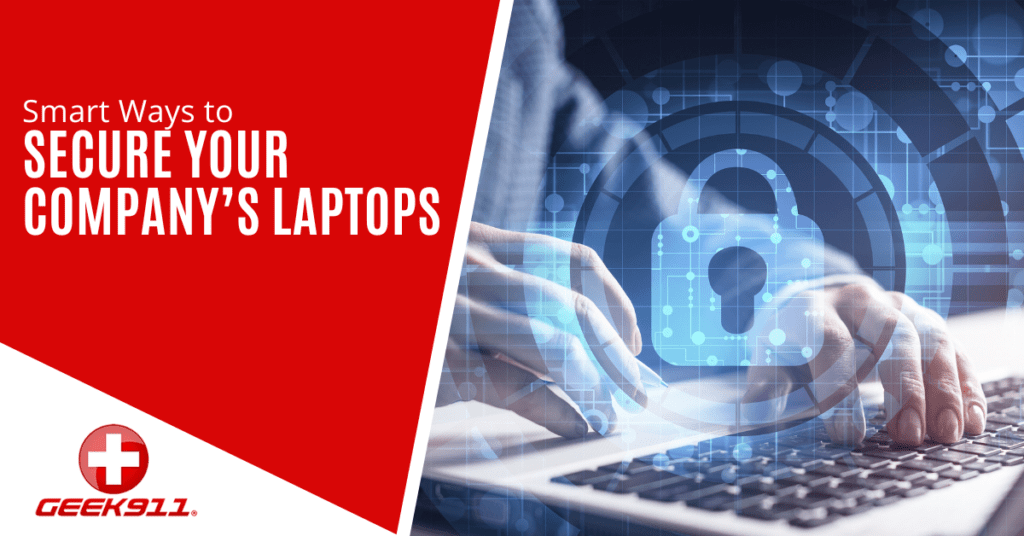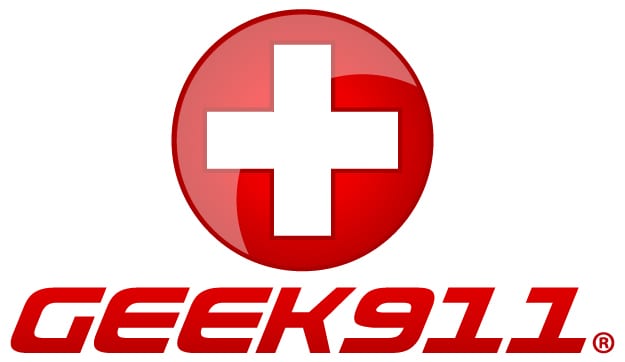Smart Ways to Secure Your Company’s Laptops

In an era where remote work and mobility are increasingly common, securing company laptops is more critical than ever. Laptops, being portable, are especially vulnerable to theft, loss, and unauthorized access.
40% of data breaches involving laptops occur after laptops are stolen from company offices.
Ensuring these devices are secure not only protects the hardware but also safeguards sensitive company data and intellectual property. If you need some tips to protect your business, read on for smart strategies to secure your company’s laptops effectively.
Implement Strong Password Policies
- Complex Passwords: Encourage the use of complex passwords that combine letters, numbers, and special characters. Passwords should be at least 12 characters long and avoid easily guessable words or patterns.
- Regular Updates: Mandate regular password changes, at least every 60 to 90 days. While it might seem inconvenient, it significantly reduces the risk of unauthorized access.
- Multi-Factor Authentication (MFA): Deploy multi-factor authentication for accessing laptops and accounts they have access to. MFA can block as much as 99.9% of malicious login attempts.
Encrypt Data on Laptops
- Full Disk Encryption: Implement full disk encryption to protect the data stored on laptops. Tools like BitLocker (Windows) or FileVault (Mac) ensure that data is encrypted, making it inaccessible without proper authentication.
- File-Level Encryption: For added security, especially for highly sensitive files, use file-level encryption. This ensures that specific files remain encrypted even if transferred or copied to another device.
Use Endpoint Security Solutions
- Antivirus and Anti-Malware: Ensure that all laptops are equipped with up-to-date antivirus and anti-malware software. These tools provide essential protection against malicious software that can compromise data.
- Endpoint Detection and Response (EDR): Implement EDR solutions to continuously monitor and respond to security threats. EDR tools offer advanced threat detection and automated response capabilities, ensuring swift action against potential breaches.
Regular Software Updates and Patch Management
- Automated Updates: Enable automated software updates for operating systems and all installed applications. Keeping software up to date protects against known vulnerabilities that attackers could exploit.
- Patch Management: Develop a robust patch management policy to ensure that all security patches are applied promptly. This includes patches for the operating system, applications, and firmware.
Secure Physical Access
- Cable Locks: Provide cable locks for laptops to secure them in physical locations. This simple measure can deter theft in public or semi-public environments.
- Lockable Drawers or Cabinets: Encourage employees to store laptops in lockable drawers or cabinets when not in use. Physical security is a critical layer that should not be overlooked.
- Tracking and Recovery Software: Install tracking and recovery software on company laptops. These tools can locate lost or stolen laptops and, in some cases, remotely wipe data to prevent unauthorized access.
Implement VPNs for Secure Remote Access
- Virtual Private Networks (VPNs): Require the use of VPNs for accessing company networks remotely. VPNs encrypt internet traffic, providing a secure connection even over public Wi-Fi networks.
- Always-On VPN: Consider implementing an always-on VPN configuration that automatically connects the device to the company’s VPN whenever it is powered on. This ensures that all data transmitted from the laptop is encrypted.
Use Mobile Device Management (MDM) Solutions
- Centralized Management: Deploy MDM solutions to centrally manage and secure laptops. MDM allows for the enforcement of security policies, remote configuration of settings, and monitoring of device compliance.
- Remote Wipe Capabilities: MDM tools can remotely wipe data from lost or stolen laptops, protecting sensitive information from falling into the wrong hands.
Restrict Administrative Privileges
- Least Privilege Principle: Apply the principle of least privilege, ensuring that employees have the minimum level of access necessary to perform their job functions. Restricting administrative privileges reduces the risk of malware installation and unauthorized changes to system settings.
- Regular Audits: Perform regular audits of user privileges to ensure that access levels are appropriate and have not been unnecessarily elevated over time.
Back-Up Data Regularly
- Automated Backups: Implement automated backup solutions to regularly back up data stored on laptops. Ensure that backups are encrypted and stored securely, whether on external drives or cloud-based services.
- Disaster Recovery Plan: Develop and maintain a comprehensive disaster recovery plan that includes procedures for data restoration in the event of data loss or system failure.
Network Segmentation
- Segmented Networks: Segment your network to limit access to sensitive data. This approach ensures that if a laptop is compromised, the attacker cannot easily access the entire network.
- Access Controls: Implement strong access controls and network policies to restrict which devices can connect to specific segments of the network.
Get Device Management & Security Solutions from GEEK911
Securing company laptops involves a multi-layered approach, involving cybersecurity software, maintenance, and best practices. If you need some help putting mobile device management strategies in place, give us a call. We’ll help ensure your endpoints are protected, no matter what.
Contact us today to schedule a consultation. Call 866-433-5411 or reach us online.
